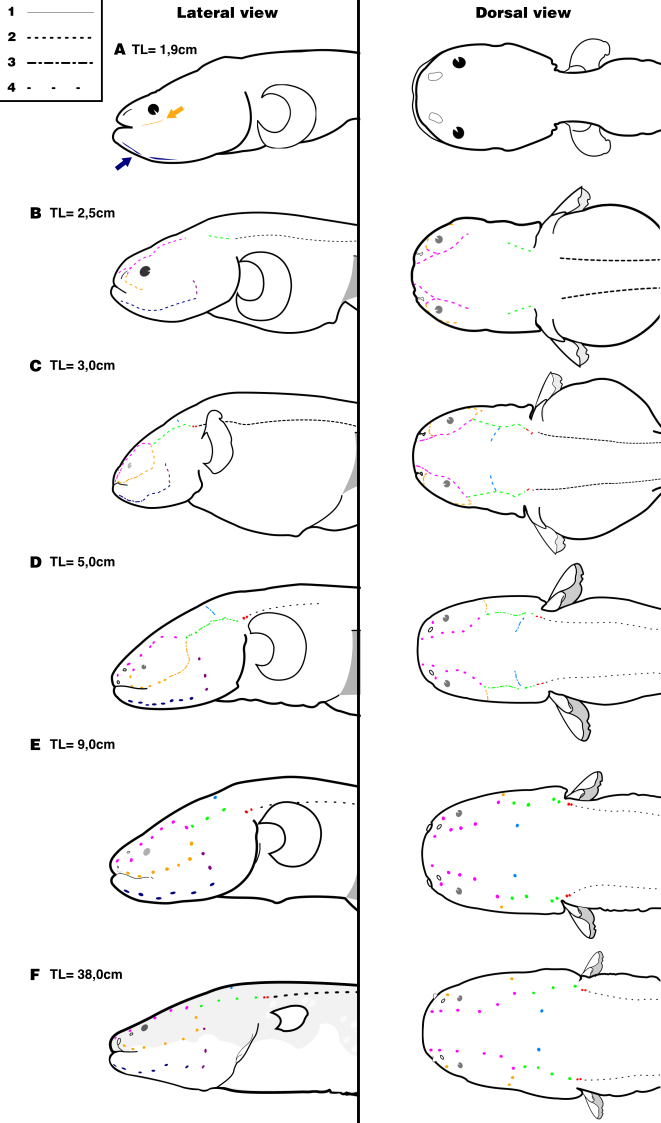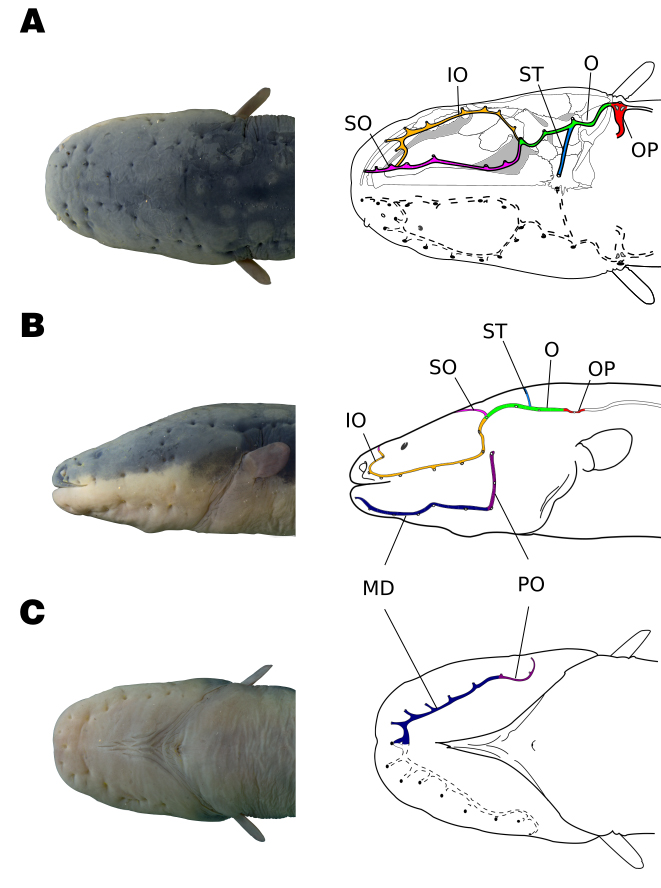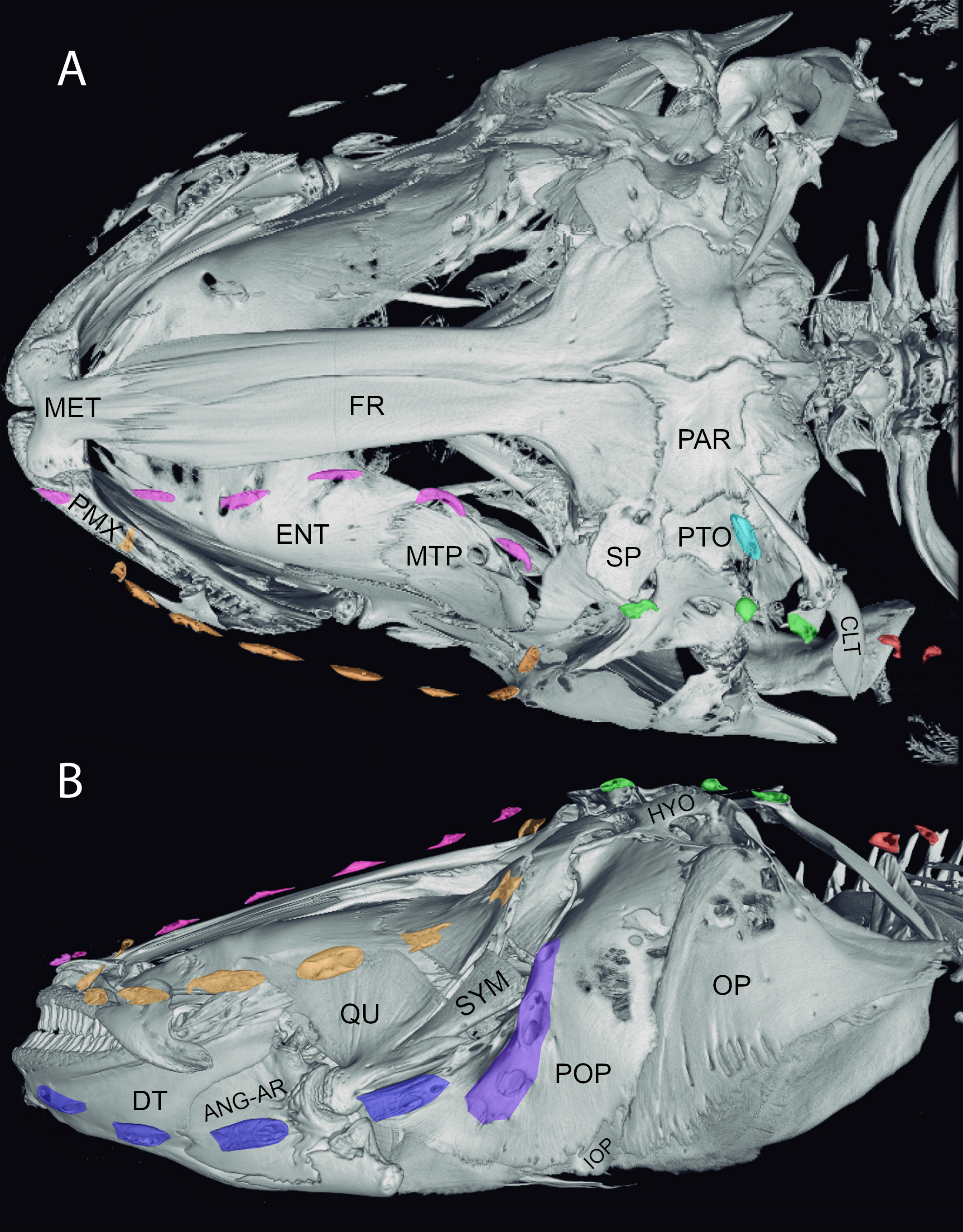Abstract
Electrophorus spp. generate high-voltage electric discharges for defense and hunting, and low-voltage electric discharges (as other Gymnotiformes) for electrolocation and communication. Despite intense interest in the unusual electrogenic and electroreceptive capacities of electric eels, the other sensory systems of Electrophorus spp. are relatively poorly known. Here we describe the ontogenetic development and organization of the cephalic lateral-line canals in the lowland electric eel, Electrophorus varii. Preserved specimens of larvae, juveniles, and adults were examined to describe the spatial distribution of the canals and pores. Ontogenetic shifts of the cephalic lateral line formation were observed for each canal and support a hypothesis of non-synchronized development. The morphogenesis of cephalic canals in larvae and juveniles begins just before the onset of exogenous feeding. In adults, the cephalic sensory canals are formed separately from the skull and overlay cranial and mandibular bones and muscles. This study provides the first detailed description of the development and organization of the cephalic lateral-line system in Electrophorus varii.
Keywords:
Electric eel; Life history; Mechanoreception; Ontogenetic shifts; Sensory system

 Thumbnail
Thumbnail
 Thumbnail
Thumbnail
 Thumbnail
Thumbnail
 Thumbnail
Thumbnail



